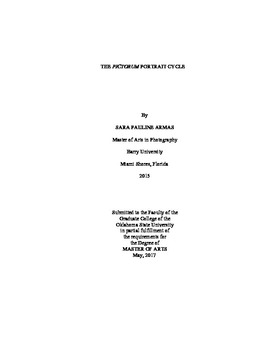| dc.description.abstract | First published in 1572, the Pictorum was the first printed portrait series solely dedicated to artists. It contained twenty-three engraved portraits of the most illustrious painters of the Low Countries. These engravings were made by some of the most prolific artists of its day, including Hieronymus Cock, Cornelis Cort and the Wierix brothers, each accompanied by a laudatory Latin poem by scholar Dominicus Lampsonius. Up to that moment, the portrait cycle was reserved for nobility, biblical or mythical figures and clergy. By appropriating such a tradition, the Pictorum raised status of its artists. The series had an immediate impact and continued to be re-published and expanded upon into the next century. The Pictorum spoke directly to artists, scholars and art-lovers, and engaged in the contemporary dialogues on art that came to define the period. It addressed artists through its technique, scholars with its focus history and theory, and art-lovers with its reference to social customs and popular print-genres of the time, such as emblem books. This study brings new attention to the Pictorum as a work of art, arguing that its design allowed it to contribute directly to contemporary dialogues between artists and art lovers of the sixteenth and seventeenth centuries. Furthermore, this study looks to the influence of the series outside its own time and place, in Spain of the seventeenth and nineteenth centuries, and in the twentieth-century United States, to gain further insight into how the series was received by various audiences over a long period of time. The lasting presence, use and influence of the Pictorum has meant that the artists pictured within it continue to be remembered, their likeness and talents “seen,” even into present day. More significantly the series continues to serve as a muse to artists who carry on the tradition of artists’ portrait cycles. By positioning the Pictorum as a visual narrative rather than an illustrated text, we can tease out a more nuanced elements of the series, inspiring not only new perspectives in scholarship on this series but also on print culture of the Early Modern period. | |
